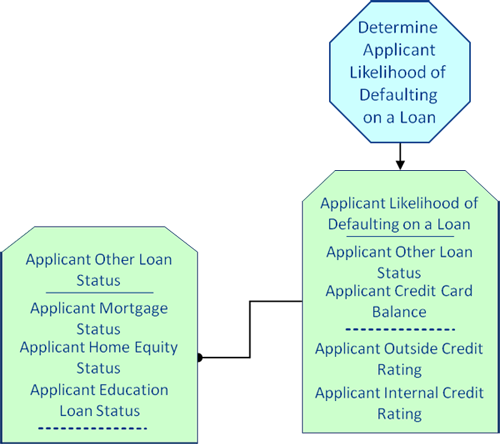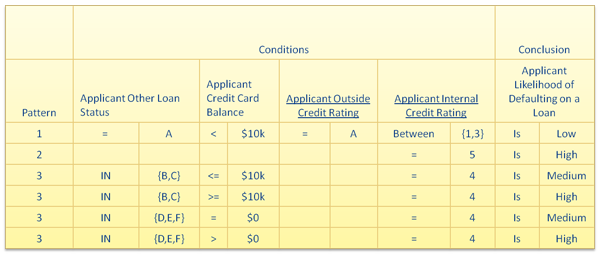Introduction
“Congratulations to the graduates of the inaugural class of the University of Washington Professional and Continuing Education Business Analysis Certificate course. The Decision Model was featured in this course and included detailed development of Rule Families and Decision Models.”
These are the words of Charles Bozonier. He is a Principal Business Analyst of Gear and Apparel at REI.
REI (Recreational Equipment Inc.) is a member owned co-op, selling outdoor recreation gear, sporting goods, and clothes via some 125 retail stores in about 30 states, catalogs, and the Internet. Charles specializes in requirements facilitation workshops, root cause analysis, detailed functional specifications, data analysis, strategic planning and business case development.
Why feature Charles in this column? He is a change agent in at least two ways. First, he tested and succeeded with The Decision Model in his corporate job. Second, as a Business Analysis Instructor at the University of Washington (UW) Professional & Continuing Education, he teaches the Decision Model.
First Step: The Decision Model in the Corporate World
Like most business analysts, Charles captured business rules as part of requirements gathering. Also like most business analysts, he followed traditional business rules approaches. These included writing individual business rule expressions, storing them outside the confines of process models and use cases, and providing pointers to them. However, he changed his approach after experimenting with The Decision Model.
A significant experience was dealing with a credit card company mandate. Credit card companies release mandates to issuers of credit cards and merchants who are to implement changes in the way the credit card is to be processed. The issuers and merchants must comply with a mandate or suffer increased fees and sometimes-substantial financial penalty. It comes as no surprise that sometimes the mandates are difficult to understand, let alone automate. It becomes the business analyst’s responsibility to bridge the gap between what the mandate says and how to implement it in technology.
This particular mandate contained three parts, only one of which was relevant to retailers and ETtailers. The part relevant to ETailers itself contained several parts. People struggled with how to interpret and represent the mandate correctly. Charles identified a decision within the mandate and created a decision model for it.
One of its Rule Families is in Table 1. It determines the kind of reversal a credit card transaction is eligible for: full, partial or none. The conclusion depends on three condition fact types: Order Amount, Shipment Date and Inventory Quantity. This Rule family is a dependent Rule Family to another one. The other Rule Family comes to a conclusion about whether an order is eligible for later shipment. The IT professionals were quickly able to understand the Rule Families and deploy them.
|
Conditions
|
Conclusion
|
|
Rule Pattern
|
Order Amount
|
Shipment Date
|
Inventory Quantity
|
Transaction
|
|
1
|
<
|
Authorized Amount
|
Within
|
3 days
|
Is
|
Available
|
Is
|
Partial reversal
|
|
1
|
<
|
Authorized Amount
|
Greater Than
|
3 days
|
Is
|
Available
|
Is
|
Full reversal
|
|
1
|
<
|
Authorized Amount
|
Within
|
3 days
|
Is
|
Not Available
|
Is
|
Partial reversal
|
|
1
|
>=
|
Authorized Amount
|
Within
|
3 days
|
Is
|
Available
|
Is
|
No reversal
|
|
1
|
>=
|
Authorized Amount
|
Greater Than
|
3 days
|
Is
|
Available
|
Is
|
Full Reversal
|
|
1
|
>=
|
Authorized Amount
|
Greater Than
|
3 days
|
Is
|
Not Available
|
Is
|
Full Reversal
|
Table 1 : Sample Rule Family for Credit Card Mandate
In 2010, Charles spoke at BA World in Seattle on “Business Rules, Agile and the New Decision Model” [2]. The objectives of his presentation were to establish a standard business rule method, leverage business rules with decision modeling, and utilize decision models to support agile development.
His presentation started with an understanding of business rules and then transitioned to the notion of modeling them, not just listing them. See Figure 1.

Figure 1: Reasons to Create Models of Decisions Out of Business Rules
From here, he described the characteristics of The Decision Model as explained in Figure 2 .

Figure 2: Unique and Important Characteristics of The Decision Model
He then correlated The Decision Model with agile development because of the specific benefits or outcomes shown in Figure 3. He included a Rule Family workshop for the audience.

Figure 3: How The Decision Model Delivers Agility
Second Step: Moving The Decision Model into the Academic World
As a professor, Charles specializes in educating professionals seeking growth as Business Analysts - focusing on elicitation and facilitation skills to gain consensus. Recently, he was on the advisory board for the development of the UW Business Analysis Certificate program [3]. He assisted in designing the program content. The UW BA Certificate Program is based on the core competencies outlined in the BABOK. It is a business analysis certificate program for college graduates currently working in business analysis or wishing to work in it.
Charles teaches the course titled “Synthesizing and Gaining Alignment for Implementation.”[4] His course includes The Decision Model because he said it, “changed my professional life, and revolutionized my business analysis work.” As an organizer of the BA Certificate Program, Charles made The Decision Model book required reading for his course.
This is the first course of its kind in the Pacific Northwest of the USA. Its syllabus is below.
Course Title: Synthesizing and Gaining Alignment for Implementation
This course provides methods and concepts for synthesizing research and analysis into a presentation for decision-making. Topics include use of oral communication to manage expectations, build consensus and resolve conflicts, and facilitation and effective negotiation in live work-study sessions. Techniques to improve written communication will be explored, with an emphasis on creating content appropriate documentation, self-review and peer review. Servant leadership, the neutral business analyst role and team building behaviors will be modeled, along with presentations of cost benefit.
Course Topics:
-
Facilitation Technique
-
Cost Benefit Analysis
-
Decision Modeling
-
Business Case Documentation including executive summary, strategic alignment, scope, assumptions, constraints, dependencies and risk.
By the end of this course, you will be able to:
-
Model servant leadership behavior
-
Build consensus through facilitation, resolve conflicts and eliminate dysfunctional behavior
-
Build rule families and model decisions and to separate decisions from process
-
Write a business case for an enterprise initiative that includes cost benefit estimates
Texts and Required Supplies
-
von Halle, Barbara; Goldberg, Larry. The Decision Model, CRC Press, 2010, ISBN 978-1-4200-8281-4.
-
Wilkinson, Michael. The Secrets of Facilitation, Jossey-Bass, 2004, ISBN: 978-078797578.
The First Offering of the Course
The course is one of three, ten-week courses (within a 30-week program) for the University of Washington in downtown Seattle[5]. The first offering occurred in spring 2011. The course is extremely popular, the first offering enrolling 36 students which is a full house. Students attending the program are from Boeing, Microsoft, Expeditors International, Starbucks, and others. The spring 2012 class already is almost full.
On April 25, 2011, Michael Grohs (VP Marketing KPI) and I visited Charles‘s class. People enrolled in the Systems Analysis and Design course, advisory board members as well as business students from the UW main campus were also invited to attend. After sitting through a presentation on the basics of The Decision Model, the class participated in an exercise in creating an initial Decision Model Diagram as shown in Figure 4.

Figure 4: Initial Decision Model Diagram
The class continued with populating the Rule Family for Applicant Likelihood of Defaulting on a Loan because the fictitious business leaders stated that this is where the current business crises are occurring. The fictitious business leaders provide the following thoughts:
-
Let’s start with four criteria:
- Other Loan Status
- Credit Card Balance
- Outside Credit Rating
- Inside Credit Rating
-
We need to be conservative. Let’s only allow a “low” default probability when all criteria are the best they can be which is Other Loan Status of A, Credit Card Balance < $10k, Outside Credit Rating of A, and Inside Credit Rating between 1 and 3 (our best credit ratings).
-
Let us only allow a “high” default probability for worst case, Inside Credit Rating is five, nothing else matters.
-
If Difficulty is “medium” and Inside Credit Rating is four, “medium” default probability would be for Other Loan Status of B or C if Credit Card Balance <=$10k. “High” default probability would be if Other Loan Status is B or C but if Credit Card Balance >= $10k. However, if Other Loan Status is D, E, or F (high burden of loans), only a Credit Card Balance of zero gets a “medium” default probability. Otherwise “high”
After classroom discussion that some of the input above is unclear, the class created a populated Rule Family as shown in Figure 5.

Figure 5: Potential Populated Rule Family
Of course, the next step is to validate it with the business people and to solve some of its issues. These issues are:
-
There is an obvious overlap in Rule Pattern 3.
-
Rule Pattern 1 is missing all combinations of conditions other than the one row
-
If the Rule Family determining Internal Credit Rating had as a condition the Applicant’s Credit Card Balance, this is likely to be circular logic.
-
Within Rule Pattern 3, credit card balance = $10k is covered twice
As a member of the IIBA Seattle chapter (http://seattle.iiba.org/index.php/home), Charles also arranged for Michael Grohs and me to attend and present at a chapter meeting the next evening. There was a great turnout, despite the rain, and the event was very welcoming and enjoyable. In fact, some of the UW students also attended the IIBA meeting.
Spreading the Word
Charles continues to spread the word and success with The Decision Model. He was the keynote speaker for the IPMA conference in Olympia, Washington in 2011. He featured the Decision Model as a key component in the success to revamp the REI ecommerce payment systems in an agile framework. His presentation, very well received, resonated with people there. There were 170 attendees.
Wrap Up
There is growing interest in The Decision Model among business analysts and related conferences. Other academic institutions are likely to incorporate The Decision Model into business analyst curriculums, if they have not already done so. As Charles says, “Having the decision model in the toolbox of business analysis techniques is a fundamental part of the way forward in the development of agile business solution development.”
Authors: Barbara von Halle and edited by Charles Bozonier
Charles Bozonier lives and works in the Northwest United States. He is employed as principal business analyst for REI and teaches business analysis for the University of Washington Professional Continuing Education Business Analysis Certificate Program. He has provided business and systems analysis for the finance, banking, retail and education sectors. He is a Certified Business Analysis Professional (CBAP) and has a BS in Computer Information Systems.
Barbara von Halle is Managing Partner of Knowledge Partners International, LLC (KPI). She is co-inventor of the Decision Model and co-author of The Decision Model: A Business Logic Framework Linking Business and Technology published by Auerbach Publications/Taylor and Francis LLC 2009. Barb can be found at www.TheDecisionModel.com.
[1]The Decision Model: A Business Logic Framework Linking Business and Technology, von Halle & Goldberg, © 2009 Auerbach Publications/Taylor & Francis, LLC.
[2]See www.bendfoldspindle.com and click on Business Rules, the New Decision Model and Agile
[3]http://www.pce.uw.edu/certificates/business-analysis.html
[4]http://www.pce.uw.edu/prog.aspx?id=6123&tab=Courses
[5]http://www.pce.uw.edu/prog.aspx?id=3976